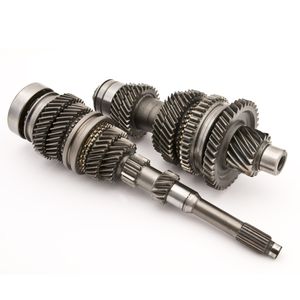
- Products
- Furnace brazing
- Bodycote

- Products
- Catalogs
- News & Trends
- Exhibitions
Furnace brazing stainless steelnickelcopper
Add to favorites
Compare this product
Characteristics
- Other characteristics
- furnace
- Material
- copper, nickel, stainless steel
- Applications
- agriculture, automotive, military, for the construction industry, for aeronautics, for the nuclear industry, medical, chemistry, for railway, for renewable energy, for the food industry, for the maritime sector
- Certifications
- ISO 9001, ISO 14001, ISO/TS 16949, OHSAS 18001
Description
Hydrogen brazing is a braze process that uses the cleaning (reducing) properties of high purity hydrogen to improve the flow characteristics of the braze alloy. The hydrogen atmosphere reduces surface oxides on the parent material, enabling the braze alloy to flow (wet) more effectively to create a high integrity braze joint.
Benefits
-Cleanliness – the reduction of surface oxides on the parent material improves the cleanliness and integrity of the braze joint.
-Increased braze alloy and parent material options – enables the use of high vapour pressure braze alloys and parent materials that cannot be brazed within a vacuum atmosphere.
Application & materials
-Medical devices
-Electronic devices
-Aerospace parts (precision machined stainless steel components)
-High vapour pressure braze alloys (Cu, Ag, etc.)
-High cleanliness assemblies
Hydrogen brazing can be applied to a multitude of materials such as stainless steel, copper and some nickel based alloys. Titanium alloys cannot be brazed in a hydrogen atmosphere. Hydrogen brazing reduces surface oxides at the faying surfaces, resulting in a clean, high integrity braze joint that improves the service characteristics of the finished part.
Process details
Hydrogen brazing can be performed within a sealed retort furnace or a hump back belt furnace. Both furnace types surround the part being processed within a high purity hydrogen atmosphere (typically with a dew point of less than minus 60°F). As the furnace load is heated above the liquidus temperature of the braze alloy.
Catalogs
No catalogs are available for this product.
See all of Bodycote‘s catalogsExhibitions
Meet this supplier at the following exhibition(s):

*Prices are pre-tax. They exclude delivery charges and customs duties and do not include additional charges for installation or activation options. Prices are indicative only and may vary by country, with changes to the cost of raw materials and exchange rates.









